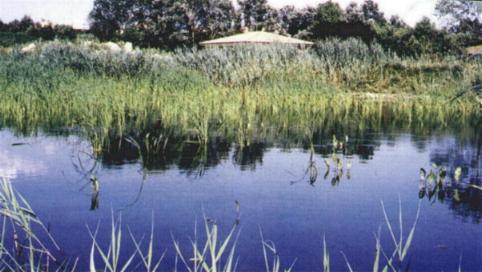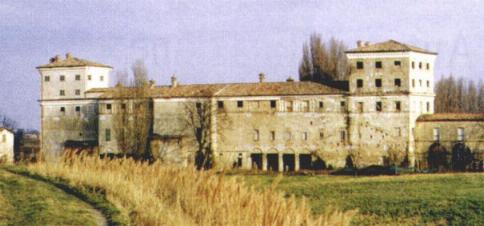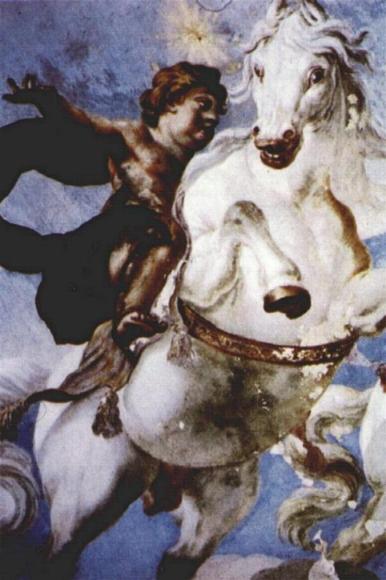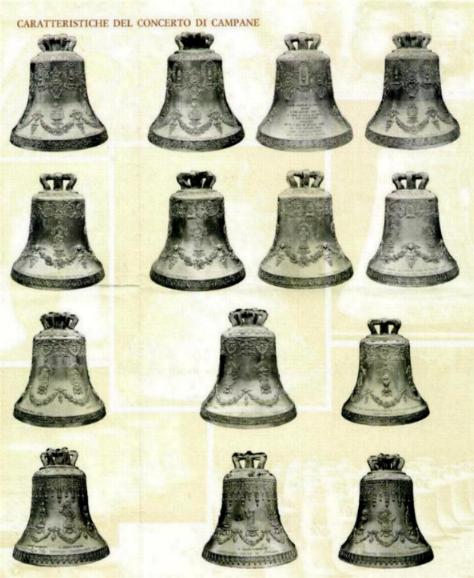RUSSI (Ravenna)
TOURIST ITINERARY
Ecological area of "Roman Villa"
The archeological area "Villa Romana" is surrounded by an
ecological area with the same name which is formed by the old clay quarry
of the Gattelli brick-kiln and by some surrounding land. It is a 13 hectares
area mainly constituted by a 10 meters deep quarry basin.
It is part of the regional pan for ecological areas,
that is of small areas, either natural or artificial, created in strongly
inhabited territories.
It is formed by particular micro-environments aimed at
recreating natural distinctions.
 Some
environments are always under water (wet area) and some are under water
just during short periods of time (flooded grassland); other environments
are the wood which is typical of river banks and of the surrounding areas
and those which are not strictly linked to the water (stable grass occasionally
covered by shrubs).
Some
environments are always under water (wet area) and some are under water
just during short periods of time (flooded grassland); other environments
are the wood which is typical of river banks and of the surrounding areas
and those which are not strictly linked to the water (stable grass occasionally
covered by shrubs).
The typical vegetation of every area has been recreated.
This cane, typhaceae, lily and water-lily are to be found in the pond,
while rare wild orchids grow well in the wet grass.
Good living conditions for the animals have been recreated.
Some birds which live in this area are the coot,
the moor-hen and the wild duck. There are also some reptiles (tortoise,
newt) and some animals.
The area is now administered by legambiente and WWF.
It is the most imposing and somptuous building of the area
and has been built 2 Km far from Russi, on the right bank of the river
Lamone. It is said to be the old "Palazzo delle 336 finestre" (Palace of
teh 336 windows) because in 1910 the old Palazzo di Raffanara (Raffanara
was the old name of the area; the first document referring to the castle
date back to 1155) was demolished and the beautiful stairs connecting it
to the new building were given as a present to the Baglioni Hotel in Bologna.
Also the summer arena and the stables were demolished. The Rasponi, who
had tried for centuries to become "Signori di Ravenna", but did not succeed
because of the opposition of the Popes, decides to approach the Church
gradually.
 On
the 1st of february 1664 Guido Paolo and his brother Cesare bought, for
29500 scudi, the Raffanara and Madrara estates from the Rectory of Porto
and decide to build a new palace.
On
the 1st of february 1664 Guido Paolo and his brother Cesare bought, for
29500 scudi, the Raffanara and Madrara estates from the Rectory of Porto
and decide to build a new palace.
Count Cesare, who in that period had been appointed Cardinal,
might have liked to make it his summer residence when becoming Pope. He
was born in Ravenna in 1615 and was a very intelligent and learned man
who could speak many foreign languages, hebrew included.
He was also a very good politician: when the Pope sent
him to Paris, he was able to solve in a brilliant way a hard dispute with
the King of France ad was awarded, as a recognition the title of Marquis.
On this occasion he gained the admiration and the estimation
of Cardinal Mazarin. He became the "deus ex machina" of the Holy See and
died in 1675 (one year before the Palace was finished), when it was sure
that he would be appointed Pope.
 He
is buried in a sumptuous tomb, decorated by local artists, in San Giovanni
in Laterano. The summer arena offered good shows to the many noble guests
of the Palace.
He
is buried in a sumptuous tomb, decorated by local artists, in San Giovanni
in Laterano. The summer arena offered good shows to the many noble guests
of the Palace.
Chronicles of the time state that, when the Counts went
Ravenna to Russi to spend the summer there, the procession of carriages
lasted 24 hours.
A century later, a new church was built following a project
by Cosimo Morelli. Some works of restoration have been carried out, but
they are too slow and the magnificence of the past is going to be found
only in some papers which are kept in the archives and which allowed Umberto
Foschi to write the book "Il Palazzo di San Giacomo presso Russi" (writing
by Montanari, Corbara, Iannucci; introduction by Berardi) published by
the old Cassa Rurale ed Artigiana di Russi e San Pancrazio.
This palace if famous because, on the 23rd of March 1851,
the hunting area of the villa (destroyed during World War II) saw the killing
of the famous robber Stefano Pelloni (known as Passatore) by the Pope's
troops.
 The
collection started thanks to the passion of Tino Babini, lover and researchers
of local souvenirs.
The
collection started thanks to the passion of Tino Babini, lover and researchers
of local souvenirs.
He has been devoting himself since an early age to historical
researches and to researches in the field of bell art. He owns at present
a very peculiar collection (unique in the region) which is composed of
40 bells.
Further information: Tino Babini - tel. 0544 580187.
The ethnological collection of rural civilisation
The collection started thanks to the
local cultural circle in 1969. Since then, the inhabitants of the area
have given to the circle some pieces which are of great documentary value
as far as rural civilization is concerned. The exposition is constituted
by two rooms: in the first there are the objects which were used outside
the house and in the second those used inside it.
Recently, a route about the manufacturing
of the hemp has been added. To visit the collection (in the local primary
school), please call the Cultural Association "La Grama" (0544534303).
During the guided tours which are organised for schools or for groups,
it is possible to see a demonstration of traditional spinning, warping
and weaving.
The Museum of contemporary furniture
In San Vitale, the road which connects Ravenna ro Russi,
the "Museo dell'arredo contemporaneo" (museum of contemporary furniture)
was created in 1988 by the painter and artisan Raffaello Biagetti, which
owns a furniture shop. This museum, the only one of the kind in Italy,
gathers pieces of furniture dating back to the period between 1880 and
1980.
Opening time: 15,30 - 19,30 (Monday and Tuesday excluded).
-
RISTORANTE MORELLI - Via don Minzoni, 30 - Russi
-
RISTORANTE LA VILLA - Via Godo Vecchia, 35 - Russi
-
RISTORANTE IL SOCIALE DELLA CACCIA - Via Faentina Nord, 137
- Godo di Russi
-
RISTORANTE CUCOMA - Via Molinaccio, 175 - San Pancrazio di
Russi
-
TRATTORIA ROMAGNOLA - Via Modigliani, 9 - Russi
-
PIZZERIA RISTORANTE DA PINO - Via Ungaretti, 20 - Russi
-
RISTORANTE PIZZERIA PONTE DEI BARBARI - Via Faentina Nord,
85 - Russi
-
PIZZERIA REGINA - via Garibaldi, 117 - Russi
-
HOTEL MORELLI - Via don Minzoni, 30 - Russi
-
TRATTORIA ROMAGNOLA - Via Modigliani, 9 - Russi
Home
page
 He
is buried in a sumptuous tomb, decorated by local artists, in San Giovanni
in Laterano. The summer arena offered good shows to the many noble guests
of the Palace.
He
is buried in a sumptuous tomb, decorated by local artists, in San Giovanni
in Laterano. The summer arena offered good shows to the many noble guests
of the Palace.